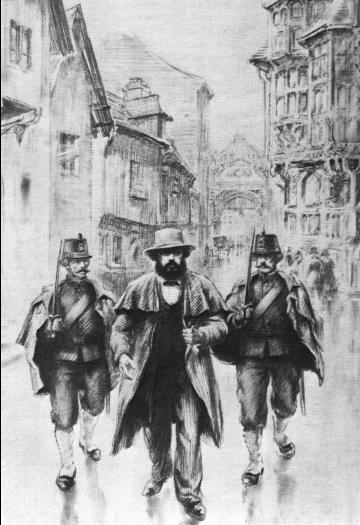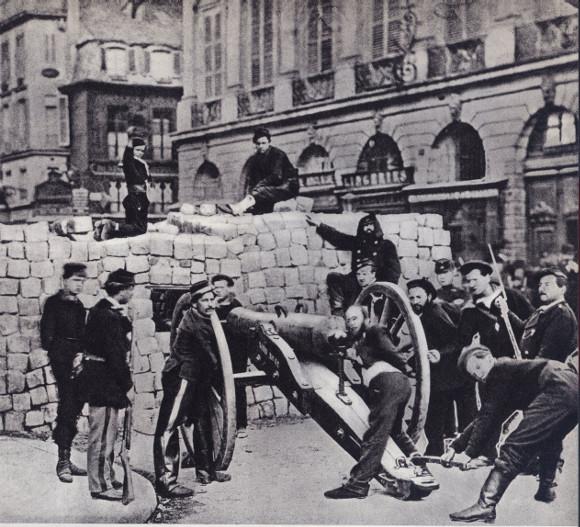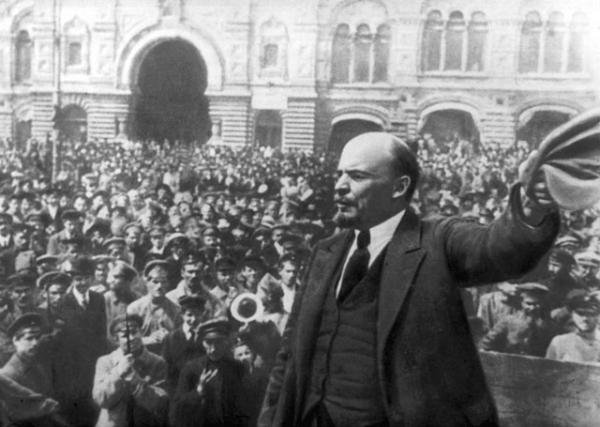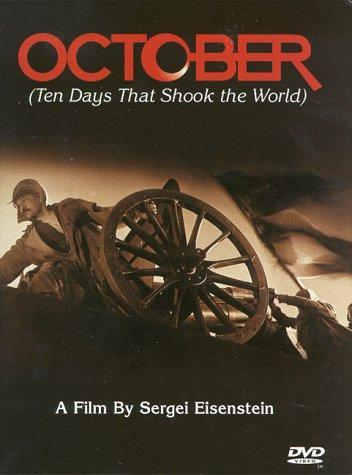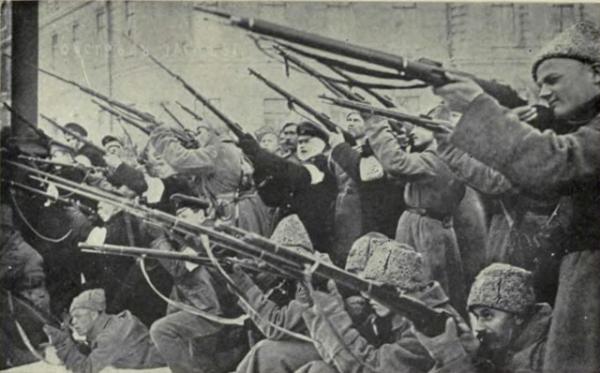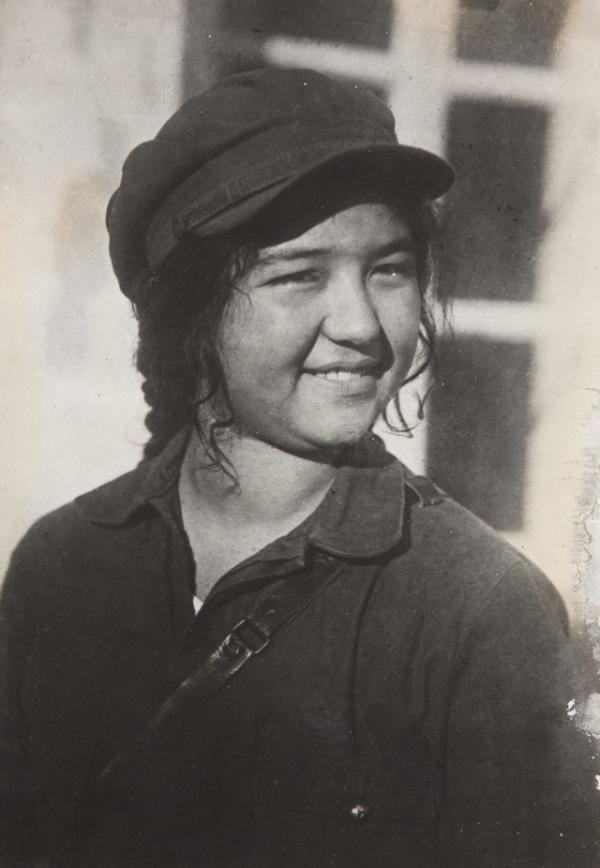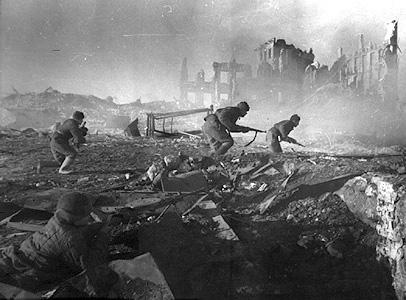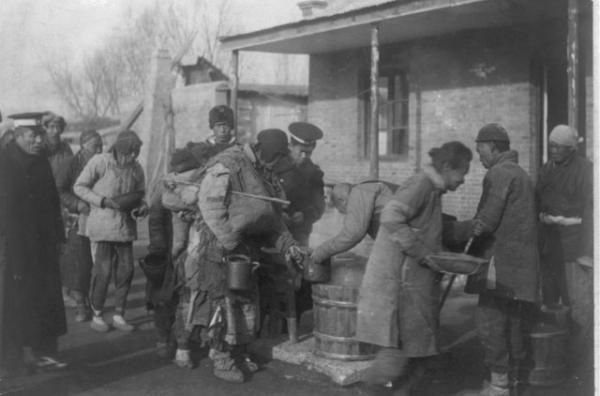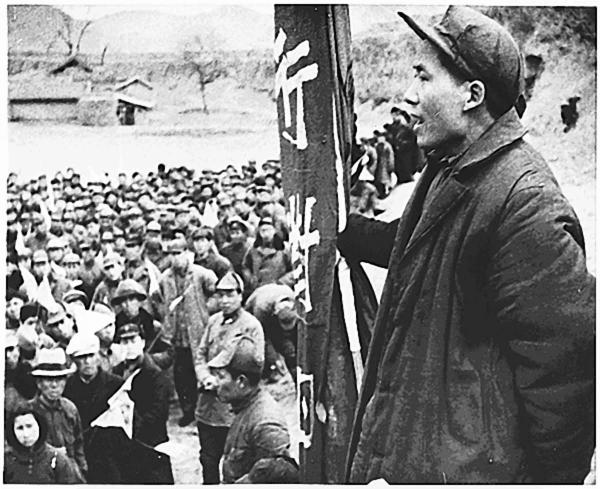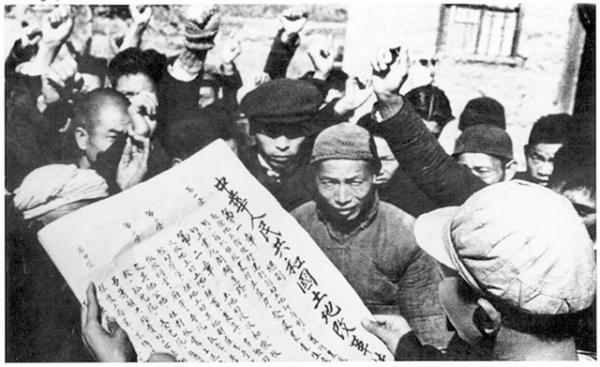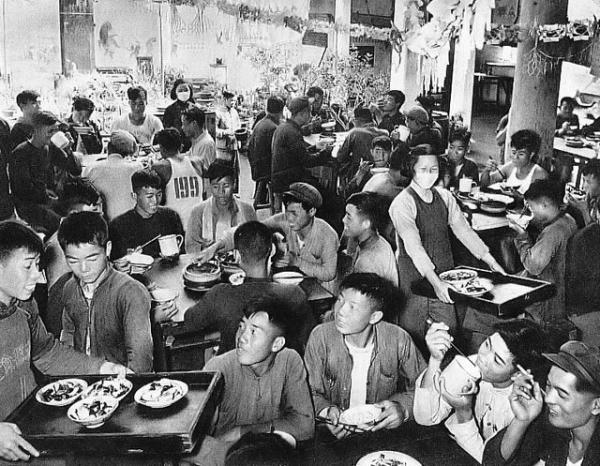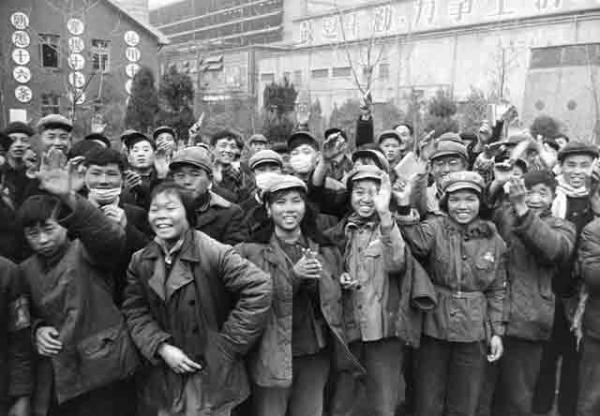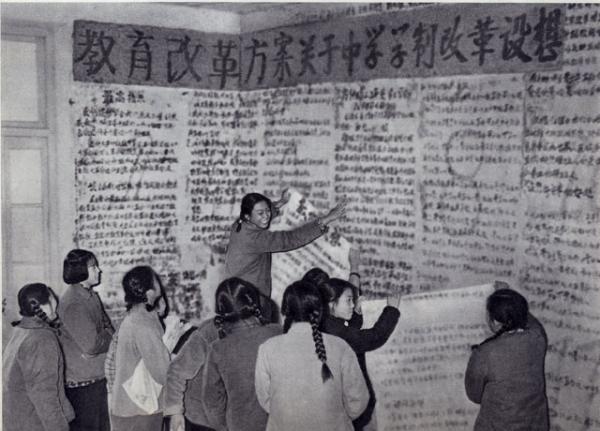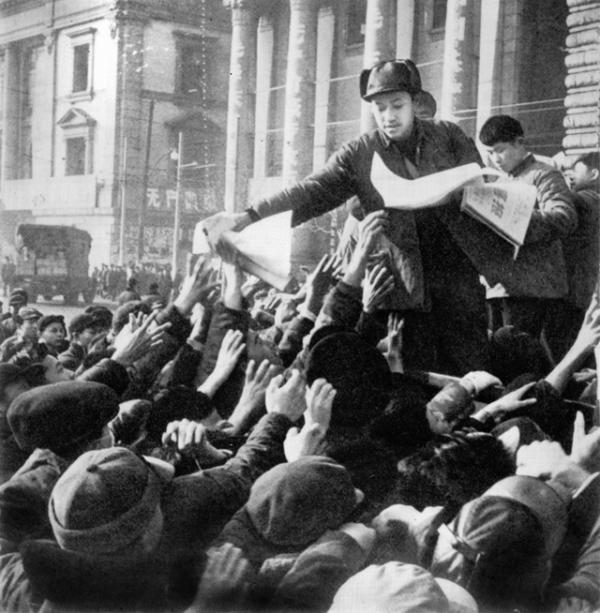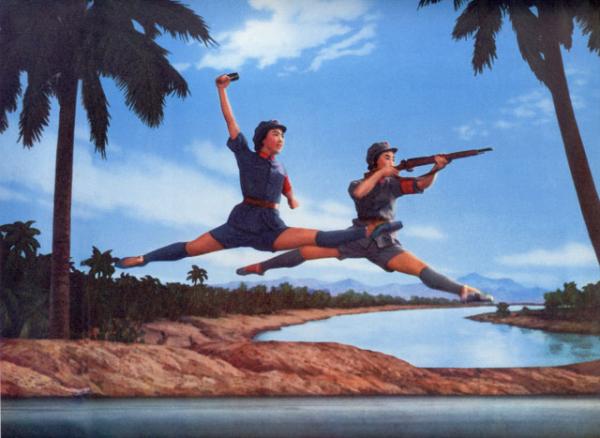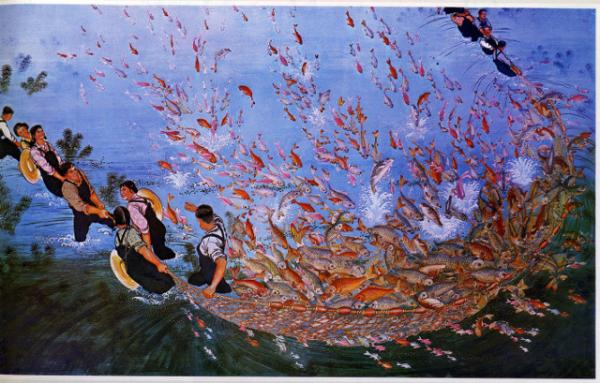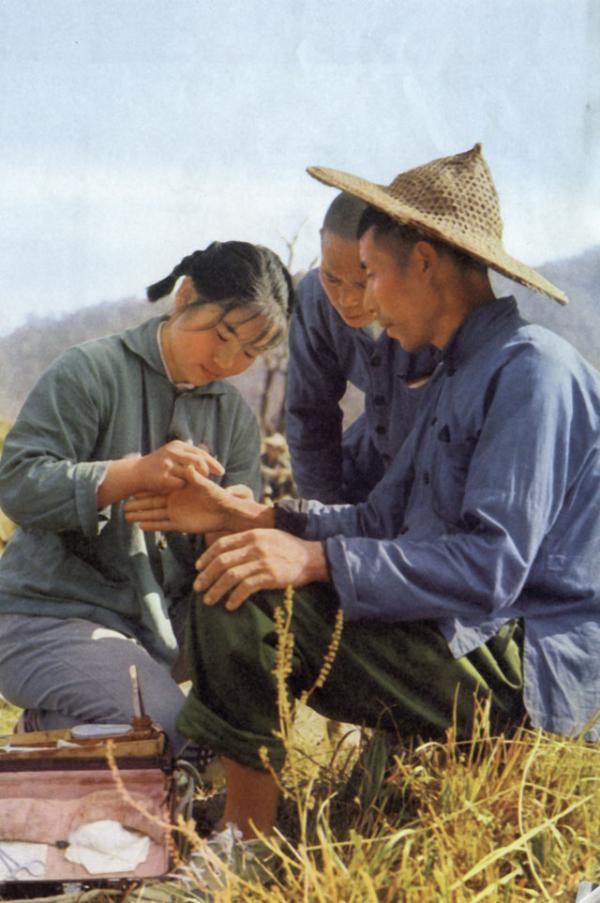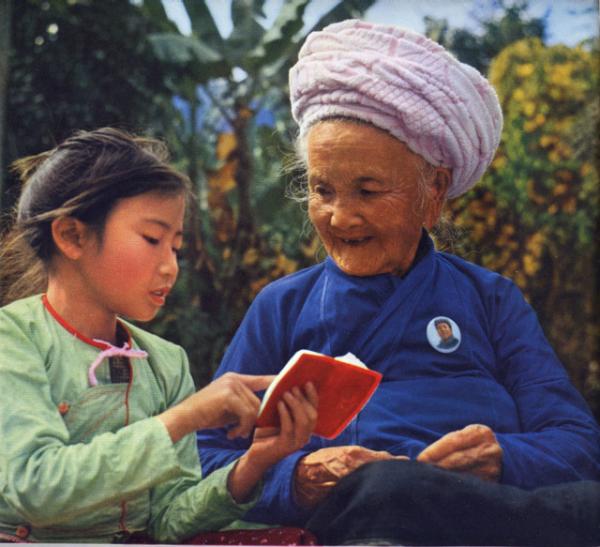The short-lived Paris Commune of 1871, the Russian revolution of 1917–1956, and the Chinese revolution of 1949–1976 were titanic risings of the modern-day “slaves” of society against their “masters.” Against incredible odds and obstacles, and in what amounts to a nanosecond of human history, these revolutions accomplished amazing things—and they changed the course of human history. For the first time, the long dark night of humanity—the period when society has been divided into exploiter and exploited, oppressor and oppressed—was broken through. A whole new form of society began to be forged.
—The Communist Manifesto
—Early to mid-1800s
—1848
+
— Early to mid-1800s
Capitalism became dominant in Europe and brought tumultuous political, economic, and social change. Bourgeois (capitalist)-led revolutions rattled the old order only to replace it with new forms of exploitation and oppression. From Britain to Russia, tens of millions of laborers were violently driven from the countryside into rapidly expanding cities. Death among workers from cholera and other diseases was widespread. A million Russians died in the cholera epidemic in 1847–1851. It was common for children—often orphans—to work in factories 12-14 hours a day.
— 1848
Karl Marx and Friedrich Engels released the Communist Manifesto. It revealed for the first time that “the existence of classes is only bound up with particular historical phases” of human development. Another, far better world was possible for all humanity. The Communist Manifesto called on workers of all countries to overthrow capitalism and establish socialist societies with the goal of a world without classes.
Close
—The Paris Commune
—1871
+
— 1871
In March, workers and lower-middle-class and other sections of the population in Paris, France, rose up against the capitalist regime. The French army was driven out of the city. Revolutionaries established the Paris Commune. The Commune separated church and state. Workers seized and ran factories abandoned by capitalists. The Commune aimed to empower the whole population in running society. Women played an important and heroic role in the uprising and brief development of the Commune.
The old regime regrouped its military forces and launched a savage assault on the Commune. The Commune was drowned in blood, and the message from the old regime was clear: never again will have-nots rise up, never will socialism and communism come to power.
The Commune announced to the world that the oppressed and exploited were taking the historical stage to scale the heights of human emancipation. Marx enthusiastically supported the Commune. He saw it as an historic first attempt to bring about a new form of class rule and a new mode of governance—the beginning outlines of the dictatorship of the proletariat. But he also pointed out that one of the Commune’s fatal weaknesses was that it did not move decisively to thoroughly shatter and dismantle the old state machinery, concentrated in the permanent army of the old regime. To establish a whole new economic and social system, you have to create a new state power that can enforce the will of the formerly oppressed and exploited.
Close
—The World's First Socialist State
—1914
—1917
+
—1914
With the outbreak of World War 1 in 1914, workers, peasants, and others were sent to the front lines to slaughter each other in a war fought by blocs headed by Germany on the one side, and by Great Britain and the U.S. coming in later on the other. This was an imperialist war for global supremacy, and particularly for control over the oppressed colonial regions of Africa, Asia, and the Middle East. Some 10 million soldiers died in that war.
The Russian communist leader V.I. Lenin fought to uphold and learn from the inspiring experience of the Paris Commune, from both its strengths and its weaknesses. He identified the need for, and forged a vanguard communist party—known as the Bolsheviks. Lenin and the Bolsheviks stood out from all major parties in Europe for going up against “rally around the flag” patriotism that swept up sections of the masses in the imperialist countries to support and fight the war.
—1917
Lenin called World War 1 an imperialist, “predatory, plunderous” war. People in Russia suffered terribly under the autocratic tyranny of the Tsar (emperor). It was an imperialist country but the vast majority of people were desperately poor peasants. In October 1917, Lenin and the Bolsheviks led a mass armed insurrection that swept the old regime from power. The revolutionary uprising was based at first among workers in Russia’s major cities, and then swept into the countryside, uniting especially with the poorest and most oppressed among the peasants.
Close
—Capitalists Attack the New Society
—1917-1921
+
—1917-1921
The new revolutionary government immediately issued two stunning decrees. The first took Russia out of the war and called for an end to the slaughter and for peace without conquest or annexation. The second decree empowered peasants to seize the vast landholdings of the Tsar, the aristocratic landholding classes, and the church (a large landowner).
A new world was in birth—for the first time since the emergence of class society, a society was not organized around exploitation. The Bolshevik revolution reverberated and inspired the oppressed around the world. Revolutionaries worldwide forged communist vanguard parties. The Soviet Union was attacked furiously by capitalist-imperialist powers—with slanders and guns. Fourteen foreign countries invaded to crush the revolution, and they allied with reactionary defenders of the old order in Russia.
Devastating civil war raged for three years. The “Red” Soviet forces fought heroically against “White” counter-revolutionary forces. By 1921, revolutionary rule was established throughout the Soviet Union.
Close
Soviet Socialist Economy
—1920s–1930s
+
—1920s–1930s
Lenin led the Soviet Union until his death in 1924. After Lenin’s death, Joseph Stalin, a great revolutionary, led the Soviet people to build a socialist society and economy. In 1928, the Soviet Union launched the first “Five-Year Plan.” Millions of workers and peasants were fired with the spirit of “we are building a new world.” In factories and villages, people discussed plans: how to reorganize production and the difference it would make for their lives—and for people of the world—that such an economy was being built. People volunteered to help build railroads in wilderness areas. Workers voluntarily worked long shifts. At steel mills, they sang revolutionary songs on the way to work. Never before in history had there been such a mobilization of people to consciously achieve planned economic and social aims.
All this was in extreme contrast to the capitalist world wracked by the Great Depression. The unemployment rate in the U.S. was 24 percent in 1933. In the Soviet Union, there was essentially full employment and the Communist Party mobilized society to meet critical needs.

New collective farms, like the one pictured here, transformed the old, private exploitative system of agriculture that could not reliably feed the population. Collectivization in the late 1920s and early 1930s was also a great social upheaval that challenged old customs and brought the poorest of peasants into political life.
Close
—From Prison House of Nations to Union of Soviet Socialist Republics
—1920s–mid-1930s
+
—1920s–mid-1930s
Pre-revolutionary Russia had been an empire—known as the “prison house of nations.” The dominant Russian nation had colonized areas and regions of Central Asia (for instance, Uzbekistan), and also had subordinated more developed areas such as Ukraine. Non-Russian nationalities made up about 45 percent of the population, but minority cultures were forcibly suppressed and their languages couldn’t be taught or spoken in schools. Jewish people were periodically subjected to lynch-mob-like anti-Semitic “pogroms.”
After the victory of the 1917 revolution, most of these nations and nationalities would become united in the Union of Soviet Socialist Republics. Resources were dedicated to raising the living standards for Central Asian nationalities, and promoting their previously suppressed and dismissed cultures. The educational system, media, and cultural institutions raised consciousness about conditions of oppressed peoples and combated prejudice. The new state officially outlawed anti-Semitism.
Close
—Women's Liberation in the Soviet Union
—1920s–mid-1930s
+
—1920s–mid-1930s
In the first 10 years of the Bolshevik revolution, a vast social revolution transformed Soviet society. Men no longer had absolute patriarchal authority under the law over wives and children. Women received equal pay. Maternity care was provided free. The Soviet Union was the first country in modern Europe to make abortion legal. All these changes were momentous in their own right, but were part of a bigger vision and mission to build a new world free of all exploitation and oppression.
A major focus of socialist transformation in the Soviet Union was the liberation of women. One high point: on International Women’s Day, 1927, the Communist Party launched a movement to overthrow deeply rooted, brutally oppressive traditions imposed on women in the Central Asian Soviet republics, including marrying young girls to old men, and men having multiple wives. In Uzbekistan, Tajikistan, and Azerbaijan, women were backed by the revolutionary state to cast off heavy head-to-toe coverings of horsehair and cotton that Muslim women and girls over the age of 9 or 10 were forced to wear in the presence of men outside their families.
Close
—World War 2 and the Soviet Union
—1933-1938
—1939-1945
—1956
+
—1933-1938
Hitler and the Nazis came to power in Germany in 1933. By the late 1930s, the Soviet Union was in the crosshairs of the powerful German imperialist military, which was driven to crush and dominate the Soviet Union. The new socialist society faced an extremely dire situation.
—1939-1945
In 1939 World War 2 broke out between two blocs of imperialist powers that sought to violently re-divide the world. Contending blocs were headed by Japan and Germany on the one side, and the U.S. and Britain on the other.
The Soviet Union defeated invading German troops at the epic Battle of Stalingrad in 1943. Some 26 million Soviet citizens lost their lives in World War 2. The Soviet Union was victorious but suffered great devastation.
—1956
After Stalin’s death in 1953, new bourgeois (capitalist-imperialist) forces within the Communist Party maneuvered to seize power. In 1956, Nikita Khrushchev, a high official in the party and government, consolidated the rule of a new capitalist class and led in systematically restructuring the Soviet Union into a capitalist society, while calling itself socialist. This was the end of the first proletarian state.
Communists worldwide were confronted with the necessity to sum up, learn from, and advance off this experience. This great challenge was taken up by Mao Zedong, leader of the Chinese Revolution.
Close
—China Before the Revolution
+
Before the 1949 revolution, major capitalist powers had carved up and dominated China economically and militarily. The great majority of Chinese people were destitute peasants, subjected to the cruel and arbitrary rule of all-powerful landowners. With frequent famines and savage exploitation, peasants often faced starvation and sometimes ended up selling their children so that others in the family could survive. Women were subjected to wife-beating, arranged marriages, forced prostitution, and foot binding where young girls' feet were brutally wrapped and bent to keep them small and "attractive" to men. The situation in the cities was desperate. In Shanghai before World War 2, 25,000 dead bodies were collected from streets each year. In a country of 500 million people, only 12,000 doctors were trained in Western medicine. Four million people died each year from infectious and parasitic diseases. Life expectancy was 32 years. There were 60 million drug addicts.
This is the situation in which people made revolution.
Close
—Chinese Revolution Triumphs
—1921
—1934
—1937-1945
+
—1921
Mao Zedong helped found the Chinese Communist Party—the vanguard leadership for the Chinese revolution.
—1934
Mao led 100,000 Red Army fighters and communist organizers on the Long March—a 6,000-mile dangerous trek through swampland and mountains to regroup and reorganize from massive repression and to spread the revolution. They fought warlord and reactionary armies. Only 10,000 people made it to the end of the march, at Yenan in northwest China, but the revolution was able to go forward. Mao, now the clear leader of the Chinese Communist Party, forged and applied a path to seizing nationwide power and establishing socialism—a path that included the military strategy of protracted people's war.
—1937-1945
In 1939, World War 2 broke out. In 1937, the Japanese had invaded and occupied large parts of China. In the context of this, and with their eyes on the prize of seizing nationwide power, Mao and the Communist Party led the war against the Japanese occupation. The Japanese forces were defeated in 1945. Immediately, civil war broke out between the communist-led forces and the reactionary forces of the Guomindang, backed by the U.S. imperialists. After four years of intense combat, the Chinese revolution triumphed in 1949.
Close
—New State Power in China
—1949-1957
+
—1949-1957
The Chinese revolution established a new state power, a form of the dictatorship of the proletariat, the heart of which was the alliance of workers and peasants. This new state power protected the rights of the people, suppressed counter-revolution, and made it possible to carry out the all-round transformation of society and to support world revolution. In the cities and rural areas, new institutions were established at every level of society, led by the Communist Party, and involved millions and millions of the formerly exploited in taking initiative to transform and administer society.
With state power, land reform was carried out as a revolutionary mass movement. A new marriage law gave women the right to divorce. Mass health and educational campaigns were launched and widespread opium addiction was eradicated.
Close
—Great Leap Forward
—1958-1960
+
—1958-1960
The Great Leap Forward was launched in socialist China. Communes in the countryside brought together tens and tens of millions of peasants to collectively work the land. Beyond that, the communes combined economic, political, administrative, militia, and social activity.
People’s energy and creativity were mobilized and unleashed. Communes worked to reclaim land, to plant trees, construct roads, and build irrigation projects and flood-works projects. Use of tractors and machinery became more rational because land was collectively owned. Small-scale industries were developed, such as fertilizer and cement factories and small hydroelectric plants. Peasants began to master technology and scientific knowledge. In these and other ways, gaps between the city and countryside, peasants and workers, and mental and manual labor were reduced.
The communes have been blamed for a major famine in 1959–60. But the reality is that the communes did not cause this famine. And by 1970, due in large part to the changes made possible by the People’s Communes, China had solved its ages-long hunger problem. This was because the communes and whole socialist economy established a reliable system of food production and of food supply for the people for the first time in Chinese history.
Women’s oppression was challenged. Communal kitchens, dining rooms and nurseries allowed women to enter the battle to create a new society. Old habits and values that still persisted, such as superstition and fatalism, were struggled against, as were feudal customs, such as arranged marriage.
Communes were a leap in the masses’ direct participation in all spheres of society and in changing relations between and among the people.
Close
—Mao Launches the Cultural Revolution
—1966
+
—1966
In part based on summing up the restoration of capitalism in the Soviet Union, Mao saw that the Communist Party could be turned into an instrument of a new exploiting class. And in fact, there was sharp struggle in the leadership of the Communist Party between a core of revolutionaries led by Mao and, on the other hand, certain top leaders in the Party and state—“capitalist-roaders”—who had been gaining strength and were working to overthrow socialism and bring back capitalism.
To deal with this, Mao and the revolutionary core launched the Great Proletarian Cultural Revolution in 1966. The Cultural Revolution marked a breakthrough in dealing with a world-historic problem of communist revolution—preventing counter-revolution but in a way that enables the masses to play the decisive, conscious role in changing society and changing themselves: not a top-down removal of capitalist-roaders. Through mass political and ideological struggle led by the revolutionary core of the Party, masses played a decisive role in politically striking down the bourgeois power centers within the Communist Party. The Cultural Revolution was about revolutionizing all of society and transforming people’s thinking and values.
Close
—Seizing Back Political Power
—1966-1969
—1967-1968
+
—1966-1969
Young revolutionary activists, the Red Guards, played a key role in initiating and spreading the Cultural Revolution. This struggle was full of invention and innovation: street rallies, protests, strikes, and demonstrations. "Big character posters" went up all over the country. These included large-type protest posters plastered everywhere, where people criticized policies and leaders. Public facilities were made available for meetings and debates. Small newspapers flourished. In Beijing alone, there were 900 newspapers. The revolutionary state made available materials and facilities for mass political activity and debate.
—1967-1968
The Cultural Revolution took a new turn. Forty million workers around the country engaged in intense and complicated mass struggles to seize power from entrenched conservative municipal party and city administrations. There were work stoppages, and sometimes struggles not to stop work.
Close
—Shanghai "January Storm"
—1967
+
—1967
Shanghai, autumn 1966: some 700 organizations existed in the factories. Revolutionary forces mobilized and capitalist-roaders fought back, attempting to discredit the revolutionaries and buy people off with wage increases.
Revolutionary workers, with Maoist leadership, united broad sections of the city’s population. In January 1967, they broke the hold of the capitalist-roaders who were running the city. They seized the main municipal building, took over the communications hubs, and began organizing distribution of basic goods in the city. This was the Shanghai “January Storm.”
People held mass discussions and mass debates about how to run the city and what political structures would best serve the goals of the revolution. They experimented with new institutions of citywide political governance.
Close
—"Women Hold Up Half the Sky"
—1966-1976
+
—1966-1976
The struggle against women’s oppression was a big part of the “revolution within the revolution.” Mass campaigns launched during the Cultural Revolution criticized feudal Confucian and capitalist thinking that uphold exploitative, oppressive, and unequal divisions in society.
In contrast to today’s world culture, which degrades women as weak or as sex objects, during the Cultural Revolution model operas and ballets put the masses on stage front and center, with women as physically and ideologically strong central characters. Popularized throughout the country, these works conveyed people’s lives and their role in society and history.
Young women in their millions participated in the broad revolutionary struggle. Women and men mobilized to fight against women’s oppression as part of building a new society. And in building socialism, women were unleashed to “hold up half the sky”—not only in the fight against their own oppression but in the struggle to transform and liberate all of society.
Close
—Revolutionary Art
—1966-1976
+
—1966-1976
Before the Cultural Revolution, popular culture like Chinese opera was dominated by feudal and bourgeois themes and characters, and capitalist-roaders in the Party promoted this.
The Cultural Revolution ignited an explosion of artistic activity among workers and peasants—poetry, painting, music, short stories, even film. Mass art projects and new kinds of popular and collaborative artistic undertakings spread, including to the countryside and remote areas.
Teams of cultural workers were organized to travel to remote areas, carrying bicycle-powered generators to show movies and work with peasants to create and perform plays and concerts. The vast majority of people—Chinese peasants—had never seen a movie or a play, or had a chance to participate in cultural activity on this level. Artists moved to the countryside, they lived and worked with—and learned from—the peasants, and in turn taught art to the peasants. In this way, not only was fresh and lively revolutionary culture created, but divisions between city and countryside and between laboring people and artists and intellectuals were being broken down.
Close
—"Socialist New Things"
—1966-1976
+
—1966-1976
Education was radically transformed during the Cultural Revolution. Rote “teaching to the test” style teaching methods were challenged, and a critical spirit was fostered in schools. Study was combined with productive activity. Admission policies made it possible for children of peasants and workers to enroll in the universities. Struggle was waged against the bourgeois-elitist idea of using knowledge for competitive advantage over others, individual success, private gain, and prestige. Instead, knowledge was to be used in the service of the revolutionary struggle to remake society and the world for the benefit of humanity.
“Socialist new things” reflected and promoted new socialist relations and values. “Open door” research brought scientists to the countryside to conduct experiments among peasants. Scientists learned about peasants’ lives and from their questions and insights; peasants learned about the scientific method. Educational institutions and research institutes in cities developed cooperative relationships with factories, neighborhood committees, and other organizations. People came to laboratories and laboratories went to the people.
In what was called the “barefoot doctor movement,” educated urban youth and young peasants were trained to provide basic preventive medicine and health care. There were 1.3 million barefoot doctors who lived in the countryside and contributed to solving people’s basic health needs.
Close
—Serve the People
—1966-1976
+
—1966-1976
In revolutionary China, artists, doctors, technical and scientific workers, and many other educated people were called upon to go among the workers and peasants: to apply their skills to the needs of society, to share the lives of the laboring people, and to learn from them. Great numbers of youths and professionals answered the Cultural Revolution’s call to “serve the people” and to go to the countryside and set examples for others.
Close
—Mao's Last Battle
—1973-1976
+
—1973-1976
Mao kept warning of the danger of capitalist restoration. The masses had state power under socialism, but the revolution had to continue. But socialism emerges with the scars of class society, and struggle must go on to overcome this—or else society will be dragged back to capitalism, as has happened today in China. The Cultural Revolution raged for 10 years, through complex twists and turns.
When Mao died in September 1976... that was the signal to the reactionaries within the Party. In October of that year, they staged a military coup. They immediately moved against the revolutionary core at the top levels of the Party and deployed troops in key parts of the country. There was resistance, but the suppression was quick and harsh, with large numbers of arrests and executions.
Socialism in China was defeated. The first stage of communist revolution came to an end.
Close
—Bob Avakian Brings Forward a New Synthesis of Communism
+
The defeat in China was a real turning point. There was confusion, shock, and disorientation among everyone in the world who had looked to China as an inspirational model. It was in these circumstances that Bob Avakian (BA), Chairman of the Revolutionary Communist Party, USA, rose to fill a great and historic need: to make an accounting both of what had happened in China and the responsibilities this placed on genuine revolutionaries.
BA brought scientific clarity to this crucial juncture and began to open up and chart the path to go forward. He defended the great accomplishments of Mao and the Chinese revolution, while digging deeply into the experience not only of China but of the whole first stage of communist revolution. He deeply explored and critically examined the first stage of communist revolution, indeed of the whole communist project. And in the more than three decades since the counter-revolution in China, Bob Avakian developed and brought forward a new synthesis of communism.
Because of Bob Avakian and the work he has done over several decades, summing up the positive and negative experience of the communist revolution so far, and drawing from a broad range of human experience, there is a new synthesis of communism that has been brought forward—there really is a viable vision and strategy for a radically new, and much better, society and world, and there is the crucial leadership that is needed to carry forward the struggle toward that goal.
